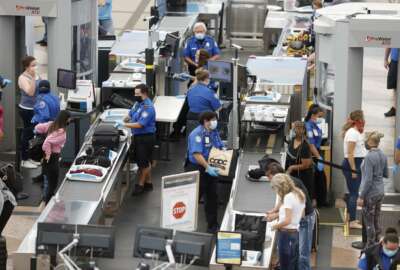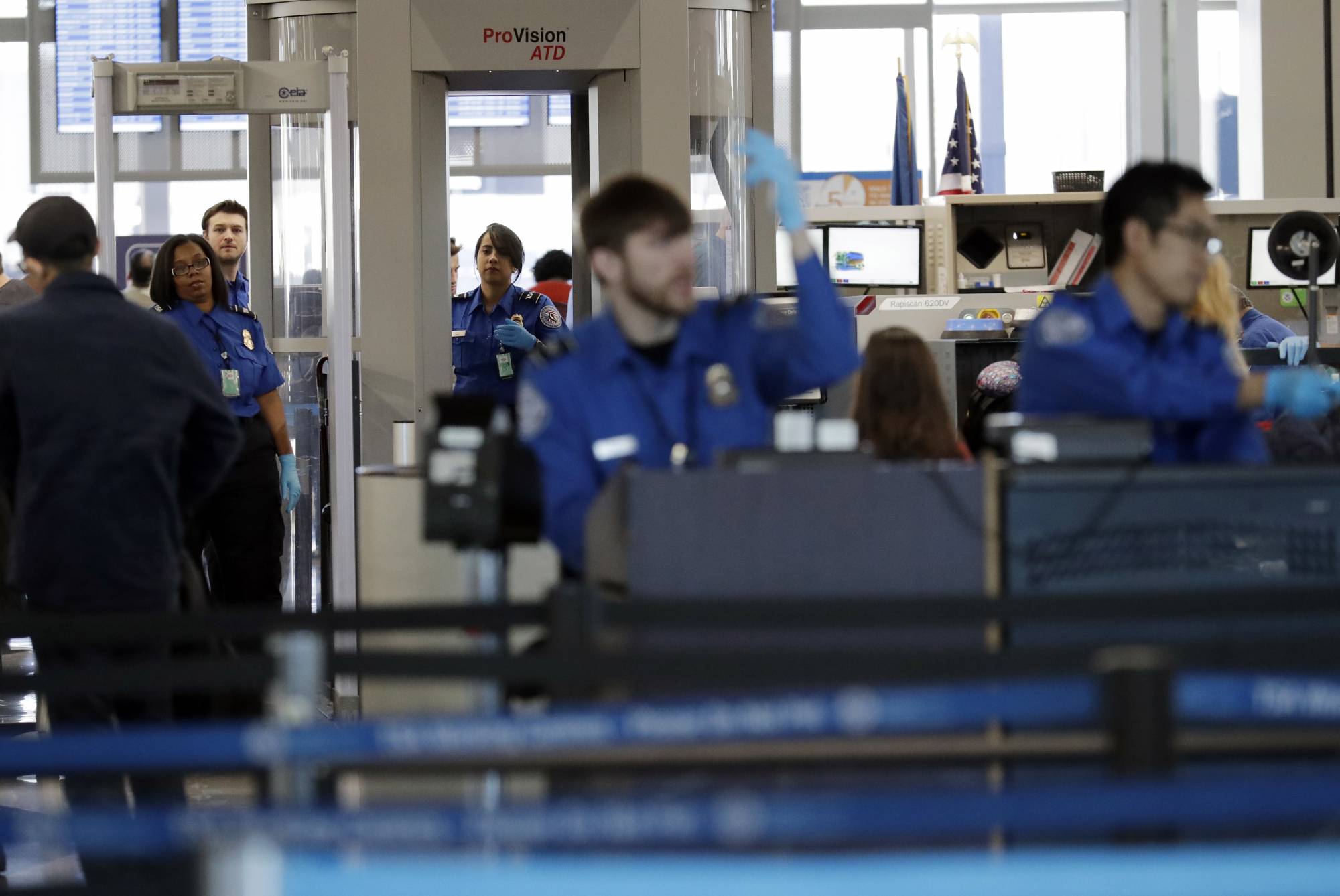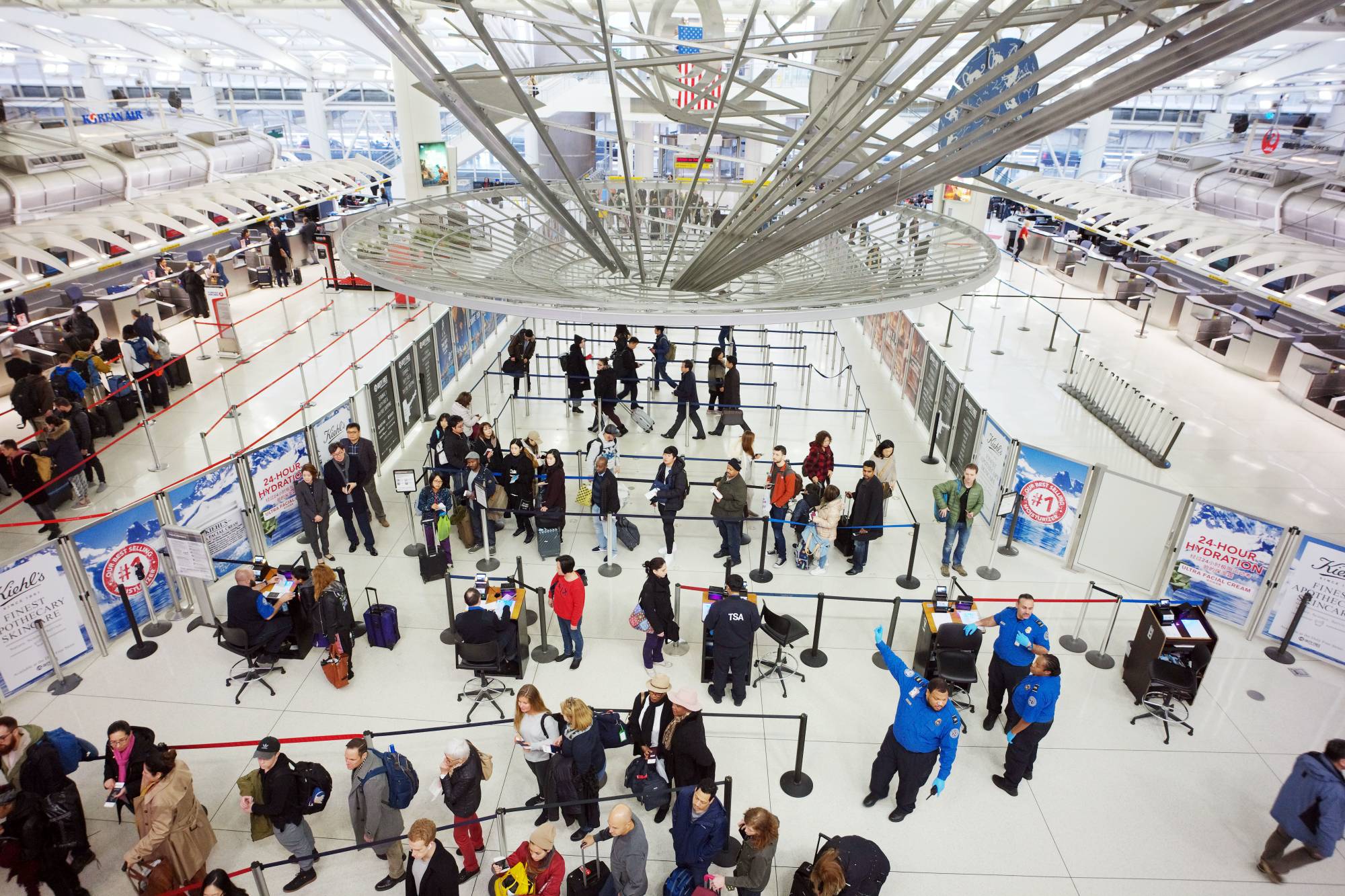
Exclusive and rare interviews with the leadership of the Transportation Security Laboratory
In a plain-looking warehouse at the out-of-the-way Atlantic City Airport, you'll find one of the nation's most important research labs.
In a plain-looking warehouse at the out-of-the-way Atlantic City Airport, you’ll find one of the nation’s most important research labs. It’s operated by the Homeland Security Department’s Science and Technology Directorate. It’s purpose is to test, validate and even help develop the screening technology for keeping air travel safe. Federal Drive host Tom Temin recently spent a day at the Transportation Security Laboratory or TSL. This interview is Temin’s first in a series of four with TSL leadership, starting with the Lab Director, Dr. Christopher Smith. Among other things, Dr. Smith explained why screening is part of the Science and Technology Directorate and not the Transportation Security Administration.
Interview transcript:
Christopher Smith
Well, Department of Homeland Security consists of a lot of different organizations and those organizations have needs, which might be, somewhat, similar to TSA as needs. And the department felt it was best to consolidate the technology under one roof, rather than have the components develop, perhaps, similar technologies, which might waste taxpayers dollars with redundant development efforts.Tom Temin
And there’s also the issue of accountability and cross referencing of people’s work, such that people don’t get, I guess, maybe, lured by their own technology or their own discoveries.Christopher Smith
That is quite correct. We are the authorized test agent for TSA, but we are in, some senses, independent of TSA. Yes, we both belong to DHS, but I do not have a reporting chain to Admiral Pekoske of TSA. So, we’re independent and TSA benefits from that independence. The flying public can be quite certain, that when TSA fields a device, that it is going through third-party scrutiny.Tom Temin
Sure. And you have, really, a combination of science, engineering, testing and evaluation, chemistry, lots of things happen here. Maybe just give us the brief overview of how it’s organized and what the activities are.Christopher Smith
Well, we’ve gone from a relatively simple problem of detecting commercial explosives, military explosives inside of checked bags, to a whole host of threats that we need to contend with. The suicide bomber, either wearing a explosive threat or carrying that threat on their person onto the aircraft, perhaps, putting it in their shoes or their underwear, as we have seen. These threats are not just commercial or military explosives. They are homemade explosives, which is a challenge that we have risen to, but not the same as detecting conventional explosives. a lot of science that needs to go into the understanding of those homemade explosives, so that we can know how they will respond to the detection technologies and make sure those technologies are tuned to those witch’s brews.Tom Temin
Sure. And beyond the chemistry and the physics of all of this, it’s increasingly sounds like, a data driven, data intensive algorithmic activity, as threats multiply, and the need for accuracy just keeps seeming to grow.Christopher Smith
That’s quite correct, especially, the imaging technologies. They produce some, very precise, images of threats in bags or on persons. Sometimes an image can be a gigabyte in size and we need to take thousands of those images, to test the efficacy of those systems. In the case, of the new algorithms, that are incorporating machine learning, we need to test sometimes 10s of thousands of images. So very data intensive, very computationally intensive.Tom Temin
So there’s a bunch of parties in this chain. There’s the flying public, there’s TSA, there’s the TSL. There’s also industry, which translates a lot of the research and development, that you do here, into the products that actually work on the frontlines at mostly airports. And so you have an interesting relationship with industry, in the sense of, getting it to where what it builds for you, is deployable in an industrial grade setting. That is the modern airport.Christopher Smith
Well, before I talk about industry, let’s not forget the national labs. [Pacific Northwest National Laboratory (PNNL)] has developed several technologies for us. Some of those technologies are already deployed in airports. They’re developing next generation technology, which we should see in the coming years. But PNNL or TSL or TSA, is not going to build and deploy their own systems. We are going to rely on private industry, to engineer and develop those systems and we are close partners with them. When those systems developers, those vendors, as we like to call them, have a technology, which they think is near ready for deployment to TSA, they will bring it to our Developmental Test and Evaluation division. Who will assist the vendor, in tuning that technology to the, particular, threats of interest to TSA. Once our engineers and scientists and the vendor agree that technology is ready for independent test and evaluation, we will transition that technology over to our IT&E organization, which is TSA is authorized test agent. The Independent Test and Evaluation organization, will test that technology to TSA s requirements and will report out to TSA, whether or not that technology meets their requirements and can be acquired.Tom Temin
I guess also, at the top of mind, is the experience and efficacy of the TSOs themselves. The people on the frontline at TSA, Transportation Security Officers, in what you do changes their work a lot. How does that figure into the equation?Christopher Smith
First, let me say that the TSOs do a fantastic job. The amount of things that they can detect, is absolutely amazing. But what we really like to do with the technology, is to relieve the TSO of those tasks, which are subject to fatigue and turn that over to computers, if those computers, if those algorithms can do a better job. It’s already the case, that facial recognition algorithms, for example, can do a better job of picking out a face than humans can do. The same may hold true for, threats can sealed in bags. And if that is the case, we would like to get those machine learning algorithms performing that function and then alerting the TSO when there is an alarm to resolve. Because humans are very good at resolving alarms. TSOs are very good at resolving alarms.Tom Temin
So you’ve got a lot of axes to operate in, because there is the need for absolute security. Because it only takes one explosive to get through, to bring down a plane or some horrible thing like that to happen. And yet, you can’t make the flying public crazy, such that it takes three hours every time you go to the airport to get through a line. And to date, TSA has been pretty good at getting better for passengers. We haven’t had any bad incidents, some have been prevented. Is that a good way to describe it? It seems like you have a multiaxis mission here.Christopher Smith
Well, you’re asking about TSA. And I would direct your questions on that to TSA. But in general, yes, what we are trying to do is, we are trying to, constantly, improve the detection of threats, both, the ones that we anticipate and the emerging threats of the future. We’re looking to reduce false alarms, to make it more convenient for passengers to get through that checkpoint. And If we can do that all on the cheap and reduce costs, that would be a great thing, too.Tom Temin
But it’s not exactly a TSA question, like we went through your lab where they are developing techniques to be able to understand what’s in bottles and containers. Whether it’s something that’s allowable or something, not spectroscopy, lots of different sciences there. And here, again, that’s your task to come up with that detection methodology and then turn it into an industrial reality. So you’ve got the accuracy piece, there’s a lot of new science happening there. And there’s also, ultimately, the customer experience of the flying public. So I think it is a TSL question, that there’s this multifaceted mission that you need to meet on.Christopher Smith
There is a multifaceted mission. We started this interview by discussing our relationship with TSA. I mentioned that we are independent of TSA, but they are very much our customer. And we will be, very responsive, to their requirements, to their concerns. We don’t invent that ourselves. That is something that is determined by TSA and delivered to us. Now, quite often, they’ll come to us and ask for our advice. But it is TSA, which is calling the shots on the requirements and on the types of technologies that they’ll need in the airport environment. It is TSL’s responsibility then, to turn their vision into a reality, by testing what comes to us from the vendors.Tom Temin
Now, ultimately, the end products are acquired by TSA, but you have a role with industry that is beyond, the big well known companies, that make that equipment with their names slapped on the side that we see at the airports. And there’s a lot of innovators, a lot of people thinking and small companies or nontraditional vendors. And you have a mechanism for bringing their technologies in, to see if they can be brought to that level of meeting a TSA requirement.Christopher Smith
That is quite right. We deal with the big firms, we deal with some systems developers, who might be out of academia, might be within the national Lab infrastructure. And increasingly, when we’re speaking about the brains of these systems, the software, the algorithms, we’re talking about some, mom and pop type operations out there. A lot of the automatic target recognition algorithms, are developed by, very bright, individuals or small organizations out there and we want to take advantage of their innovative capabilities.Tom Temin
And maybe, discuss the international angle of this, because air security, just like air traffic control, those are international activities.Christopher Smith
We very much work internationally, both, with international firms. Much of the technology in our laboratory, is produced by international companies. We work with international governments, friendly governments. We have an interest in supporting, their ability to detect threats on their aircraft, especially, those at airports, which might be the last point of departure for destinations in the United States. So yeah, we’re very much interested in working with them and harmonizing our requirements with them, especially, the Europeans. Because that would make their job a lot easier and our job a lot easier. But for further information on that, I am going to direct you to TSA.Tom Temin
All right. And getting back to the TSL, you have a lot of disciplines and a lot of skills and sciences operating here. Can you run them down for us?Christopher Smith
Well, the test and evaluation teams, are for the most part, engineers, technical professionals and folks who have experience with the design of experiments. But before we can actually test a system, we need to develop that test. The development of that test requires scientific expertise. Scientific expertise, to develop procedures, scientific expertise, to develop test tools, scientific expertise to develop the materials, that we might use during test and evaluation. So we have a robust Applied Research Division, which is populated by a bunch of, very bright, chemists and physicists.Tom Temin
Yeah, and what about computational science? Because there seems to be a lot of computational, artificial intelligence machine learning, being brought to bear on the data produced by the physical processes.Christopher Smith
Exactly. We’re in the process, now, of hiring a machine learning expert here for TSL. We could try to treat these algorithms as black boxes, but that would result in, very inefficient, tests and evaluation regime. Instead, what we need is the data analyst, the computer science, to be able to look under the hood of those machine learning algorithms and help us explore the vulnerabilities and capabilities of those algorithms. And that does require a certain amount of expertise in machine learning and statistics and linear algebra. All of those fields, which go into understanding machine learning.Tom Temin
Are there any grand design challenges, any ultimate challenges that you feel the lab has?Christopher Smith
Well, I can talk about a couple of them. The systems for passenger inspection, will identify any foreign object on your body and we’ll ask you to take that object off and put it through the X-ray machine or TSA will otherwise inspect that object, to make sure that it’s not a threat. Ideally, where we would like to get, with those passenger inspection systems, is to be able to have the system itself, make a determination on the nature of that foreign object on your body. Is it a threat, or is it benign? And we’ve got scientists working on that right now in our laboratory.Tom Temin
I’m old enough to remember when you flew, you got to the airport and walked on the plane. You gave somebody a paper ticket and walked on the plane, then magnetometers came in. Is the vision, someday, we’ll go back to walking right on the plane, only somewhere, there’s going to be a scanning apparatus. You might not even see it, or be aware of it. But it’ll flag you if you don’t belong and somebody will say, excuse me, sir, go over there. Otherwise, the other 147 people walk right on.Christopher Smith
People jokingly referred to the checkpoint of the future, as the Arnold Schwarzenegger, Total Recall System. Where he is inspected as he walking, you see the image of his skeleton as he’s walking down the hallway. I think, that is not what TSA is striving for. And passengers will, probably always, notice the checkpoint. But hopefully that checkpoint, will have shorter lines, there will be less divestiture, there will be less of a need for secondary inspections, lower false alarm rates, with all of these systems. Just a whole lot faster and a whole lot more convenient for passengers and a whole lot more efficient for TSA.
Copyright © 2025 Federal News Network. All rights reserved. This website is not intended for users located within the European Economic Area.
Tom Temin is host of the Federal Drive and has been providing insight on federal technology and management issues for more than 30 years.
Follow @tteminWFED





